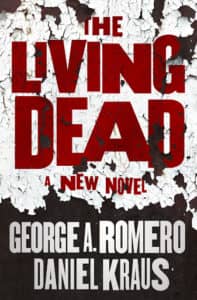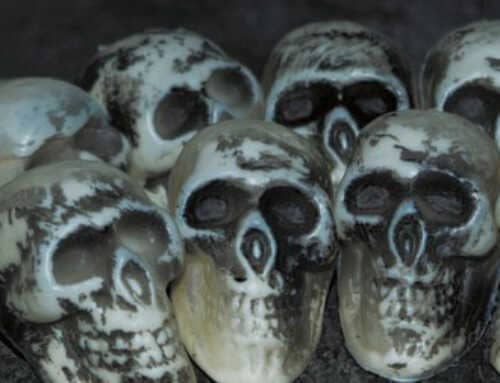It’s only fitting that George A. Romero, the father of the modern zombie, would be one of the few people capable of breathing life back into the corpses. The Living Dead, posthumously completed by coauthor Daniel Kraus, is a testament to what can be done in horror fiction when approached with a clear and expansive vision– this novel is a modern zombie epic which cannot be missed.
fitting that George A. Romero, the father of the modern zombie, would be one of the few people capable of breathing life back into the corpses. The Living Dead, posthumously completed by coauthor Daniel Kraus, is a testament to what can be done in horror fiction when approached with a clear and expansive vision– this novel is a modern zombie epic which cannot be missed.
The Living Dead is a story told in three acts, but which is really more like two halves with a strand of connective tissue tying them together. The first half chronicles the beginning of the zombie outbreak and is what you would expect of any zombie novel, albeit presented very skillfully. An expansive cast of characters is introduced whose paths will intertwine throughout the story, each with a wildly different perspective on the fledgling apocalypse. These early stories vary a bit in efficacy. For example, I found chapters involving Patient Zero and the medical examiners who discovered him to be moving but could have used just a bit less technical jargon and detail in chapters featuring Karl Nishimura and the USS Olympia. The contents of the first act are mostly familiar but well handled.
Where The Living Dead diverges from the known is in its comprehensive second and third acts, which take the reader over a decade into the outbreak. Being able to step so far into the future is what makes this different than previous works from Romero– this novel isn’t satisfied with the dead walking and wreaking havoc. Instead, we get to witness the entire life cycle of the disaster, including its convalescence and eventual death. If it sounds like I’m referring to the outbreak as a living character, that’s because it is, in part because there are a number of second-person chapters written from the point of view of the infected but also because the outbreak grows and develops almost as a human character would. It’s a tricky thing to describe and could easily have derailed the tone of the novel, but the authors have pulled it off without sacrificing the seriousness of the situation.
Given that the book has Romero’s name on it, you should know to expect a high amount of social discourse. At no point have the authors shied away from addressing heavy issues like race and media mass manipulation, but these things are approached with enough tact that they usually don’t feel over the top. It would also be fair to claim that while the book has a lot to say about how we treat each other, it doesn’t sugarcoat its more pessimistic themes. To make things concise: we can and probably should be doing better for one another, but it’s all too easy to prey on those who try to. Even with the best of intentions utopia is unattainable if demagogues are granted an ounce of leeway.
To recap: expect the first half of this monster (over 600 pages! keep that in mind) to be fairly typical, if carefully crafted, zombie fiction. It’s the latter half that elevates The Living Dead far above the average offerings of the undead. It’s great to see where Romero would have taken the subject matter without the constraints of budget and the need to appeal to film studios, as nobody else (save for maybe Max Brooks) seems to have thought to complete the story of a zombie outbreak quite like this. There’s something beautiful about the man who created the living dead seeing them through to their very end. Finally, hats off to Daniel Kraus for stepping into a tremendous pair of shoes and doing a damn fine job. The Living Dead isn’t perfect, but I’d be shocked if it doesn’t end up being one of my favorite horror novels this year.
Rating 9 out of 10 Shambling Corpses







